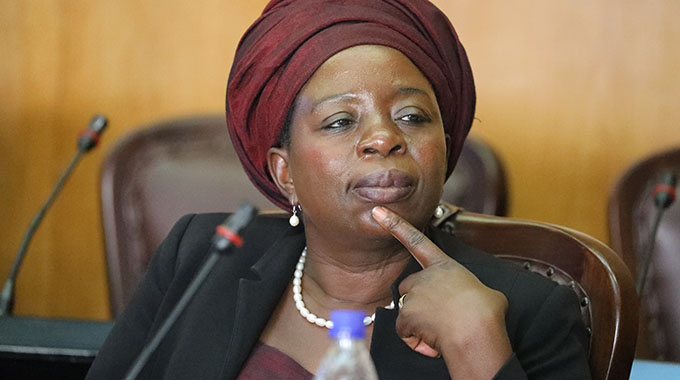Editorial Comment: Industry report will bring applicable solutions

Prices should be largely stable at the moment with the stable exchange rates and very low underlying inflation, so when there are sudden jumps explanations are needed and, where possible, corrective action needs to be taken.
The reasons might not be signs of evil or profiteering or even of bad management, but they do need to be known as the Cabinet recently decided, seeking facts and forecasts for building policies and correcting wrongs rather than playing blame games that have no solutions.
The Ministry of Industry and Commerce has now started this process. Minister Sekai Nzenza has already roped in the Competition and Tariff Commission and the National Competitiveness Commission and wants the wholehearted assistance of the Confederation of Zimbabwe Industries for a joint manufacturing report for this year.
Already it is apparent that price rises originate at the producer level, rather than in the retail sector. This was expected since the competition at the retail level is intense in a very price-conscious market and, importantly, retailers do use different pricing policies and set different margins that lead to differences, usually modest differences, in prices of each commodity on their shelves.
This is evidence that there is no conniving or cartels at this level and no price fixing rings. Things tend to balance out over a large monthly grocery order, but a careful shopper prepared to spend some time in all five major supermarket chains can, by careful and time-consuming shopping, knock several percent off their grocery bills.
Instead most shoppers tend to gravitate to the supermarket which they feel offers them the best deal on the sort of things they buy, but give the others a trial now and then, especially when there is some special offer.
However, at the production level there are suspicions when manufacturers of some goods manage to achieve the same retail prices, although there are also goods where there is obviously more competition and factors such as brand loyalty, ingredients and management and marketing skills come into play.
And in some areas there are monopolies and near monopolies, which can hide inefficiency or even price gouging, although again this is not automatic.
Minister Nzenza has made the right call when she wants those who monitor and regulate competitiveness to play a major role in her Ministry’s research. If everything is on the up and up that would be good news.
If there are quiet phone calls or friendly golf games, or badly managed monopolies, then action can be taken. While some of the desired information can be considered private and confidential, we would expect the researchers to respect that, but still be able to be given the needed details that can be processed into national statistics. Government’s pro-business and investor-friendly policies have already seen a rise in price-competition in some areas, with new investors using tighter cost-control and tighter pricing to cut into market shares of far more established companies.
Making it ever easier for Zimbabwean and external investors to open factories is both pro-business and pro-consumer. Being pro-business does not mean being pro a particular business concern.
Some Government policies in agriculture are going to start having their effect within a few months as the new harvests come in. Government has already established that rises in the price of maize meal and cooking oil, and related products, is largely due to the need of producers to have to import their raw materials rather than rely on Zimbabwean farmers.
Cooking oil processors, for example, are now importing crude soya oil as their raw material, having run out of Zimbabwean soya beans, and the largest supplier, Argentina, has raised prices 47 percent.
This should make Zimbabwean food processors in the manufacturing industry far more enthusiastic and supportive of the major Government efforts to increase production of required crops, a move which also has the benefit, if you are a manufacturer, of creating a lot of new consumers as farmers start having money in their pockets.
The maize problem has been licked by the combination of more maize being planted, better productivity among farmers and, this season, really good rains. But even in an average season Zimbabwe should now be self-sufficient with carry-over stocks from the better years solving any sudden dips due to severe drought.
This means that the prices for the basic raw material for all the maize products is known in advance, to everyone, and research can then centre on industrial efficiency and mark-ups, with one major variable removed.
Oil seed production will be a lot higher. While the ambitious targets of hectarage have not been fully met, Zimbabwean farmers have more than doubled their plantings of soya bean and cotton this season compared to last season, and the good rains will enhance that higher harvest, and sunflower is now making a welcome return as a useful cash crop for small scale farmers.
Even if imports are required at some stage, it is clear already that the bulk of the oil seed requirements are going to be home grown.
This might require processors to switch back and forth between soya and cotton-seed, but the extraction processes are similar and the fairly recent investor in both cotton ginneries and cooking oil and margarine production is obviously in an exceptionally strong position to increase his already considerable market share unless some older companies show nimble footwork.
Some companies are already into contract farming of oil seed, and others obviously need to consider this route.
Last winter there was a major jump, again as the result of careful Government policies in both input funding and irrigation upgrades, in the wheat harvest and this winter, with irrigation dams likely to be full it should be possible to take the final step to self-sufficiency.
Again that can make pricing known far in advance and allow research to centre on other variables, and in the case of bread answer the question of why price-competition is not a factor.
These are all factors in Minister Nzenza’s research and reports. Obviously there are still external factors, like world oil prices, to consider and a hard look at electricity prices, although the strong Zambezi flows should allow Zesa to have a far higher percentage of Kariba hydro in its mix.
That is important as the operating cost of generating a megawatt hour of hydro is low, and while capital and maintenance costs have to be factored in, these costs at Kariba are largely the same regardless of the amount of energy generated, so dividing them by a lot more megawatt hours cuts the cost of each unit.
But the whole ministry approach is the correct one. Rather than seeking facile solutions, that never work, the ministry wants to know, precisely, where the cost pressures are, how these can be eased if possible, and, in the end, which new investors should be actively sought.









Comments